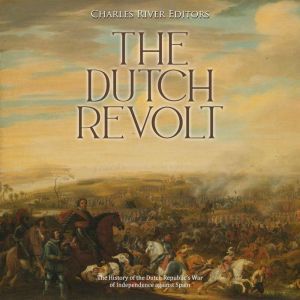
List: $6.95
| Sale: $4.87
Club: $3.47
The Dutch Revolt: The History of the Dutch Republic's War of Independence against Spain
Author: Charles River Editors
Narrator: Daniel Houle
Unabridged: 1 hr 49 min
Format: Digital Audiobook Download
Publisher: Charles River Editors
Published: 02/15/2021
Category: History - Europe - Spain & Portugal
Synopsis
The Netherlands has had a complex and turbulent history involving the interplay of multiple political entities, ethnicities, and languages. The term "Netherlands" (Nederland in Dutch, Pay-Bas in French) refers to the low-lying topography of the region and today is used specifically to describe the country bordering Germany and Belgium, but historically it referred to the entire region occupied by Netherlands, Belgium, and Luxembourg. In English, the term "Low Countries" is still used in this sense. What made the Netherlands’ global influence in the 17th century all the more remarkable is that the Dutch had only recently achieved political independence through the process of fighting a long and brutal war of resistance against rule by the Spanish Hapsburgs, starting in 1568. In 1581, the seven northern provinces – Holland, Zeeland, Utrecht, Gelderland, Overijssel, Friesland, and Groningen – declared their independence, and fighting took place back and forth on land and sea for decades, with the Dutch receiving some much-needed assistance from England’s Queen Elizabeth I. Thousands of civilians were massacred by the rampaging Spanish armies, and on the water, Dutch “sea beggars” attacked and harassed the Spanish fleet. Pro-Spanish privateers operating out of Dunkirk did the same against Dutch shipping. Although there were several issues behind the revolt, like heavy taxation, the war was also in large part a religious revolt. The Dutch in the northern and western provinces had mostly become Protestants, followers primarily of the French theologian John Calvin, and there were some Lutherans and Anabaptists present as well). Calvinism as institutionalized in the Dutch Reformed Church would become the officially recognized faith of independent Netherlands, but Philip II, the Catholic monarch of Spain, was determined to restore Catholicism through the strict use of the Inquisition against “heretics."